
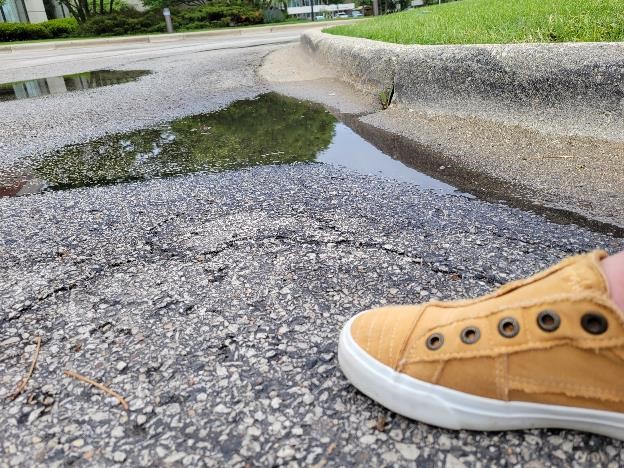
I am a big advocate of requiring Association Managers to frequently visit the properties they manage. We can learn a lot about the property and the resident experience if we visit association grounds in all types of weather. Spring showers bring an opportunity to see how water flows through the property and what our residents face getting from building to car or walking the dog in such weather. I invite you to “Canvas sneaker test” your properties in the rain. Wear a pair of canvas gym shoes and walk your property when it’s raining. How often are you hopping over puddles? If you walk around the building, do mud and standing pools of rainwater create an obstacle course for you? Is the water moving toward a drain or standing still? If we are taking care of the property and grounds, then water is draining as it should and our sneakers should prove out superior maintenance. Dirty sneakers means we have some work to do. Maintenance needs and resident experiences require attention year round. I’d love to hear what you learned on your own “canvas sneaker test!”


Gutters and downspouts are meant to channel water off a roof and move it away from the building. J. Hershey Building Consultants see all manner of downspout solutions while walking properties. Making sure downspouts properly move the water away from the building is easy maintenance if done correctly, and create a host of problems if not. Below left shows downspout water that clearly runs across the front walk of this unit and has eroded the concrete. Below right picture shows downspout water that shifts mulch from a plant bed onto that unit’s entry path.
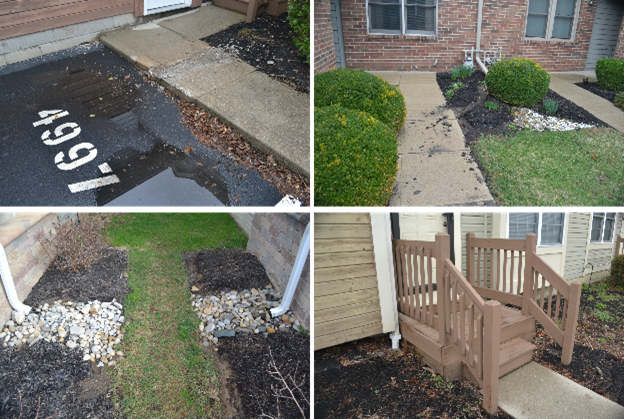
The picture above left shows downspouts that empty on to rocks to diffuse the water flow and reduce splash. In this case, water flows efficiently down a swale between the buildings into a storm drain right outside the picture. Above right, this downspout moves water into an underground drain system, which minimizes ground water in that area and helps the wood stair realize more useful years.
The American Disabilities Act was put in place to create environments more conducive to differing mobility levels. Buildings already built when the ADA was made policy were not expected to immediately remodel to meet code compliance, but as replacements or repairs are made buildings may need to come up to code. Broadly, ADA code compliance is specific to commercial buildings, or commercial components of residential buildings.
Gatehouses are a good example of when ADA code might apply to a residential property. If a gatehouse is purely decorative then there is no need to build the structure ADA compliant. If, however, there is an employee staffing the gatehouse then it would be defined as a commercial component and require ADA compliance.
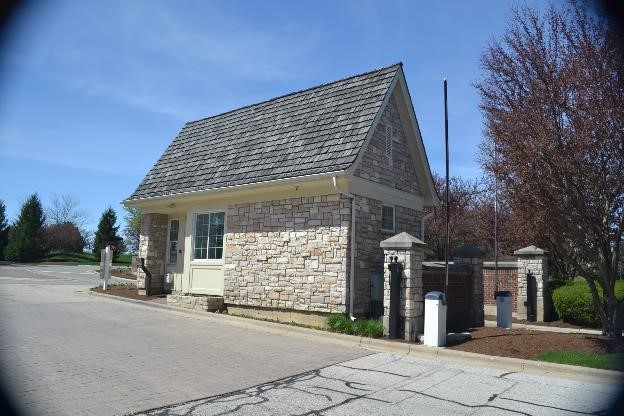
J. Hershey Building Consultants flag any risk to code violations in our reports and take pride in the depth of our code understanding. This expertise helps our clients proactively plan for code compliance rather than face the expensive issues that result from fines and reactive construction as a result of code violation.
While it may feel counterintuitive to have a “hole” in a stone wall or opening around a window, these features enable any water or condensation to evaporate out from between the layers. Without escape, moisture can cause damage to internal parts of the structure in the form of mold or rust.
Below left shows stone cladding falling away from the base of the retaining wall due to trapped moisture. The picture below right shows brick efflorescence, which happens when moisture has to come through the brick to escape.
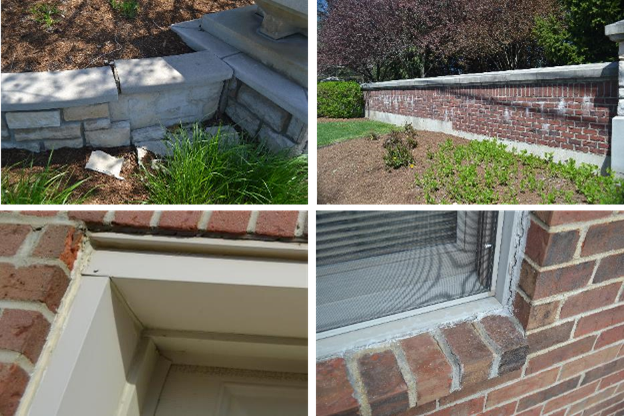
Sealant should be used when dissimilar materials abut, but should not be used to fill weep holes that are meant to allow moisture to escape. J. Hershey Building Consultants observe misuse of sealant frequently.
The picture above left shows sealant around a door frame. The sealant correctly seals the sides of the frame and beneath the steel lintel which runs along the very top of the frame. There is no sealant above the lintel, which is correct as above the lintel is a long weep hole serving to move water across and away from the frame. The picture above right also shows correct placement of sealant, but in this case the cracking indicates the sealant is soon to fail and needs to be replaced.
We try to fit in some education into our newsletters and reports, so we are adding a new section where we will show a picture and explain what is amiss. Let’s all improve our ability to spot property needs!
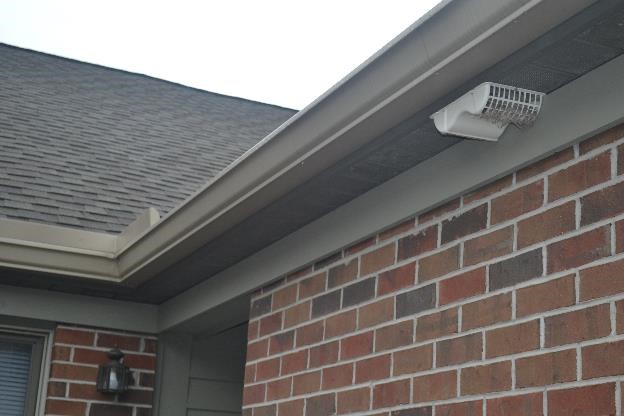
Answer: Dryer vent fire hazard. The curved plastic piece on the underside of the soffit is the output for the dryer vent. The design is likely meant to keep wildlife out of the vent. That said, there is clear buildup of lint in the vent. Lint buildup in dryer vents is one of the leading causes of fires in condo buildings. Associations need to have a plan specific to mitigating this kind of fire hazard: 1) An Association can remind residents to clean their dryer vents but must also conduct physical inspections of all unit vents themselves OR 2) An Association can have unit vents cleaned 2x/year and include the cost in assessments or bill back residents. J Hershey Building Consultants routinely see buildup in dryer vents when conducting reserve studies. An ounce of prevention is needed here!

J. Hershey Architecture is working with a unit owner on a structural issue resulting in a sagging second floor. Using a laser level and measuring distance from ceiling to the level line, it was clear the ceiling is not level. J. Hershey Architecture will determine the cause and design the recommended repairs which are the responsibility of the Association in this case.
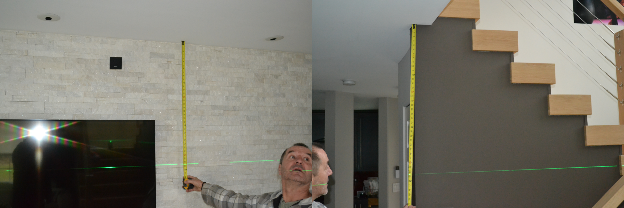

**Many thanks to our clients, our association and management company partners, our industry colleagues and project partners, and the team for another fantastic year of creating healthy and beautiful environments together. Thank you!**